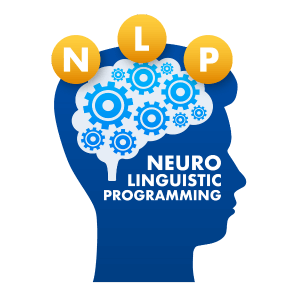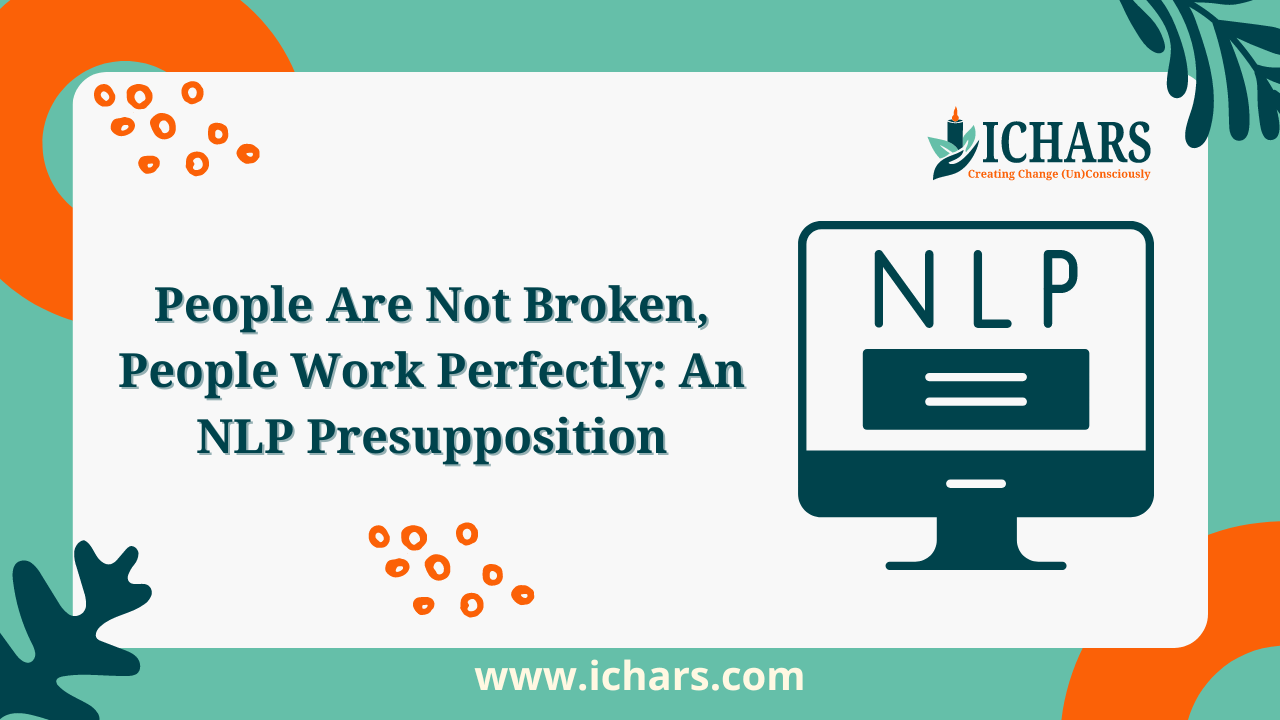Imagine a world where no one is seen as fundamentally flawed. Instead, everyone is viewed as functioning perfectly, given their current circumstances and experiences.
Imagine you’re a software developer named John. You’re really good at your job – coding is like a second language to you. But there’s just one problem…you can never seem to make it to the office on time. You’re constantly rushing in late, laptop in hand, apologizing profusely to your boss and colleagues.
Now, it would be easy to just label John as lazy or unmotivated, right? But what if I told you there’s another way to look at it? A way that’s more compassionate, empowering, and honestly, more accurate?
In the world of NLP (Neurolinguistic Programming), there’s this really profound presupposition “People are not broken, People Work Perfectly“. Basically, it means that people aren’t fundamentally broken or flawed. Instead, we’re all just doing the best we can with the resources and life experiences we have.
So in John’s case, his chronic lateness isn’t because he’s lazy – it’s because his current routine and habits are perfectly designed to make him late! It’s not a flaw, it’s just the natural result of how he’s learned to operate.
Let me break it down a little further.
Understanding the Presupposition
Definition and Explanation

At its core, this NLP presupposition “People are not broken, People work perfectly” suggests, that we’re all inherently capable human beings. Our behaviours and patterns, even the ones that seem dysfunctional or self-defeating, are really just strategies we’ve developed to achieve certain outcomes based on our experiences.
If someone isn’t getting the results they want in life, it’s not because they’re broken or defective. It’s because their current strategies and actions are misaligned with their desired goals.
Historical Context
This idea of “People are not broken, People Work Perfectly” originated back in the 1970s when NLP was first developed by Richard Bandler and John Grinder. They wanted to challenge the traditional pathologizing approach in psychology that tended to label people’s behaviours as disordered or dysfunctional.
This presupposition is grounded in humanistic psychology. It recognizes the inherent worth and potential in every individual. After all, if we assume people are doing the best they can, it becomes easier to have compassion, build rapport, and empower them to change.
Related NLP presuppositions include “Everyone has all the resources they need” and “There is no failure, only feedback,” both of which align with the belief in inherent human capability and the power of reframing experiences.
The Importance of the Presupposition in Therapy and Coaching
As a therapist or coach, adopting the People Work Perfectly mindset can be a total game-changer. Instead of seeing your clients as fundamentally flawed, you start to view their behaviours as creative solutions, just misguided ones.
In short, the application of this presupposition can help clients:
- Shift Perspectives
- Feel Empowered
- Building Rapport
For example, let’s say you’re working with Sarah, who struggles with overeating when she’s stressed. From the broken perspective, you might label her behaviour as an eating disorder or lack of willpower. But with the People Work Perfectly lens, you can recognize that her overeating is currently her best strategy for coping with stress, even if it’s not an effective one long-term.
When you approach it this way, everything shifts. Clients feel more understood and respected, which boosts their self-esteem and motivation. You’re no longer the expert fixing them, but a partner helping them find better strategies.
It’s all about empowerment. If you can help clients see their so-called flaws as creative solutions, it’s easier for them to take ownership and find new, healthier ways of operating.
Maybe your client who procrastinates is really just a perfectionist trying to avoid failure. Reframing it this way, you can redirect that perfectionism into structured, bite-sized tasks.
Remember, a positive, non-judgmental stance enhances the client-practitioner relationship. Clients are more likely to open up and engage in the therapeutic process when they feel understood and valued.
Practical Applications of the NLP Presupposition “People are not broken, People Work Perfectly” in Sessions

So how can you actually apply this presupposition in your practice? Here are a few key ways:
- Where possible, avoid using the pathologizing language. Instead of diagnosing a disorder, you might help the clients recognize and address their symptoms and their causes. Simple reframes like this can shape your whole perspective.
- Goal-setting becomes more empowering. You’re not trying to overcome flaws and weaknesses, but rather leverage your client’s existing strengths and patterns in a more constructive direction.
- Use techniques like Transformational Metaphor, Levels of Transformation, Thought Restructuring, N-Step Reframing and Anchoring. These are all about helping clients adopt new perspectives and associations around their experiences.
For instance, restructure the fear of failure as a desire for success and excellence. Or creating an anchor (like a hand gesture) linked to feelings of confidence and capability.
Addressing Potential Pitfalls
Now, I can hear some of you thinking But Josh, if I tell my clients they’re perfect just as they are, won’t that just enable their bad behaviours?
It’s a valid concern, but it’s also a common misconception about this principle. Viewing someone as working perfectly doesn’t mean justifying or approving of all their behaviours. It simply means understanding that those behaviours make sense based on the client’s current strategies and experiences.
The goal is still positive change – you’re just taking a different, more compassionate route to get there.
Another potential pitfall is client resistance. Some clents really hold onto those self-critical beliefs of being fundamentally flawed or broken. In those cases, you’ll need to use delayering process gently introduce the idea and back it up with examples and small wins to help them embrace the new perspective.
And of course, as with anything in our field, ethical considerations are key. You’ll want to balance the optimism of this approach with pragmatic realism, validating real struggles while still encouraging positive change.
Conclusion
At the end of the day, the NLP Presupposition “People are not broken, People Work Perfectly” is all about cultivating a more empowering, effective approach to therapy and coaching.
It’s about trading judgment and pathologizing for compassion and partnership. It’s about helping clients see their full potential not in spite of their flaws, but because of their remarkable ability to adapt and survive.
If you want to dive deeper into principles like this one, I’d highly recommend checking out some books on NLP, considering trainings like the Cognitive Hypnotic Coaching Diploma, and reading up on other NLP presuppositions.
Who knows? Adopting this simple shift in perspective might just be the game-changer your practice needs.

